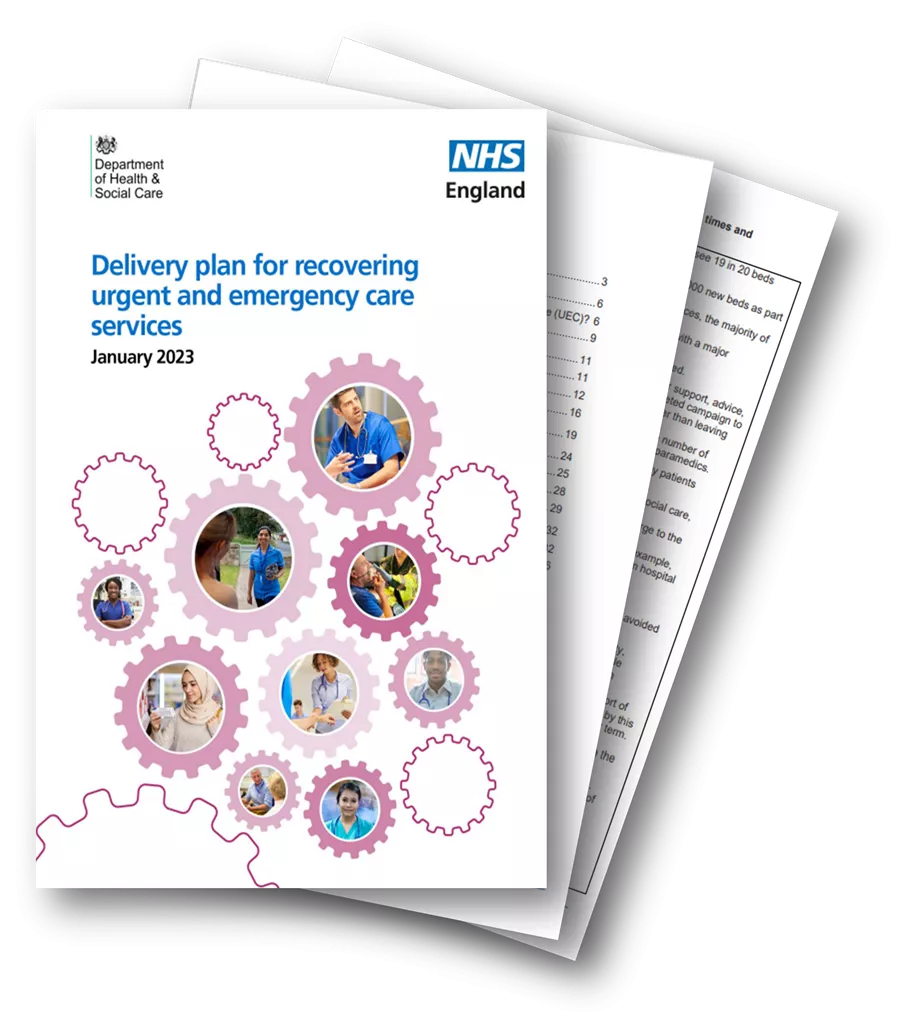Matthew Winn
Matthew Winn, Chief Executive of Cambridgeshire Community Services NHS Trust, outlines a delivery plan focusing on expanding and enhancing urgent and emergency care services outside hospitals. The plan covers key areas like improving discharge processes, increasing capacity, growing the healthcare workforce, and enhancing access to appropriate care. Specific actions include developing virtual wards, enhancing community health services, and rolling out two-hour urgent community response services across England as part of the NHS Long Term Plan.
Download Presentation

Please find below an Image/Link to download the presentation.
The content on the website is provided AS IS for your information and personal use only. It may not be sold, licensed, or shared on other websites without obtaining consent from the author.If you encounter any issues during the download, it is possible that the publisher has removed the file from their server.
You are allowed to download the files provided on this website for personal or commercial use, subject to the condition that they are used lawfully. All files are the property of their respective owners.
The content on the website is provided AS IS for your information and personal use only. It may not be sold, licensed, or shared on other websites without obtaining consent from the author.
E N D
Presentation Transcript
Matthew Winn Chief Executive - Cambridgeshire Community Services NHS Trust and Specialist advisor to NHS England on community health
Delivery plan for recovering urgent and emergency care services
The plans five key areas of action Expanding and better joining up health and care outside hospital Stepping up capacity in out-of-hospital care, including virtual wards, so that people can be better supported at home, including to avoid unnecessary admissions to hospital. Improving discharge Working jointly with all system partners to strengthen discharge processes. More investment in step- up, step-down and social care. A new metric based on when patients are ready for discharge - data published ahead of winter. Increasing capacity Investing in more hospital beds and ambulances. Making better use of existing capacity by improving flow. Growing the workforce Increasing the size of the workforce and supporting staff to work flexibly for patients. Making it easier to access the right care Ensuring healthcare works more effectively for the public, so people can more easily access the care they need, when they need it. 3 |
Expanding and better joining up new types of care outside hospital Community health services, including therapy services, help keep people well at home and in community settings close to home. They can reduce pressures on hospitals and emergency services and improve patient experience and outcomes. Develop transfer of care/discharge hubs to ensure safe and timely hospital discharges Scale up virtual ward capacity for frailty and acute respiratory infection, building on the evidence of what has worked well this year Making use of new technology and better collaboration, including between ambulance services and community care Improve care for those who fall or live with frailty Use of UCR - consistently reaching 70% of patients referred within 2 hours, service operates for at least 12hrs a day 4 |
What is a two-hour urgent community response? Two-hour UCR services provide assessment, treatment and support to people over the age of 18 in their own home or usual place of residence experiencing a health or social care crisis at risk of hospital admission within the next two to 24 hours Single point of access should be used Starts within 2 hours of the referral being made Multidisciplinary team 5 |
Progress rolling out two hour urgent community response NHS Long Term Plan (LTP), all parts of the country to increase the capacity and responsiveness of UCR 2020 2021 2019 2023 2022 Ageing Well Programme launch A consistent UCR across England Accelerated implementation Consistency and scaling up Consolidating & realising impact 2022/23 Operational Planning Guidance UCR data published The national evaluation 7 accelerator sites selected CSDS goes live! technical guidance national 2-hour guidance 2021/22 Operational Planning Guidance 2023/24 Operational Planning Guidance Technical guidance refresh 6 |
Coordinating care improvement approaches Breaking down barriers between organisations and removing silo working will deliver improvements in the care patients receive, increasing quality and patient experience Whole system approach reducing unnecessary trips to ED Strengthening service offers across UEC, improving access to outside services for bookable triaged appointments Utilising community based teams and incorporate them as part of team morning huddles to review the previous evening capacity Balancing the system before winter case mix, demand and capacity Strengthening Access and Capacity within the system by placing the patient in the right service not a default service HARIS Principles Learning systems and clinical conversations
Virtual wards provide hospital level care at home The acuity and complexity of the patient's condition differentiates virtual wards from other community and home-based services virtual ward v t ( )l w d It provides urgent access to hospital-level diagnostics (such as endoscopy, radiology, or cardiology) and may include bedside tests such as point of care (POC) blood tests It provides hospital-level interventions (such as access to intravenous fluids, therapy, and oxygen) A virtual ward is a safe and efficient alternative to NHS bedded care. It requires daily input from a multidisciplinary team and sometimes multiple visits and provisions for 24 h cover with the ability to respond to urgent visits, often enabled by technology Virtual wards support patients who would otherwise be in hospital to receive the acute care and treatment they need in their own home. It requires consultant practitioner specialist leadership and clear lines of clinical responsibility This includes either preventing avoidable admissions into hospital, or supporting early discharge out of hospital. Defined inclusion and exclusion criteria, with defined target population and deliver a time-limited short-term intervention of 1 14 days. VW patients have equity of access to other specialty advice as though an in-patient. NB: A virtual ward is not a mechanism intended for enhanced primary care programmes; chronic disease management; intermediate or day care; or proactive deterioration prevention. Wider virtual care supported services (including NHS@home) are scaling to enabling these cohorts to be increasingly supported at home / in the community. 8 |
Progress so far Virtual wards established in every ICS and we are collectively supporting more people each month. Over 100,000 people were supported by virtual ward teams in the last year There are currently 7,968 virtual ward beds available Utilisation of virtual ward beds continuing to grow 9 |
Looking forward: National ambition in England for 2023/24 The 2023/24 Priorities and Operational Planning Guidance and the Delivery Plan for Recovering Urgent and Emergency Care lay out the ambition for virtual wards: To meet these ambitions, systems are asked to: The longer-term ambition for the programme is to: In addition to scaling-up capacity, we will: Systems are asked to: scale-up virtual ward capacity from current levels of ~7,000 VW beds (Jan 2023) to over 10,000 beds ahead of winter continue scaling up frailty and ARI virtual wards achieve 40-50 virtual ward beds per 100k population increase utilisation of virtual wards towards 80% by September 2023 develop virtual wards for a wider range of conditions support systems to standardise their virtual wards offer Virtual ward funding 23/24 is part of 1bn UEC capacity funding, funded through system allocations to increase capacity based on agreed system plans. 10 |






























